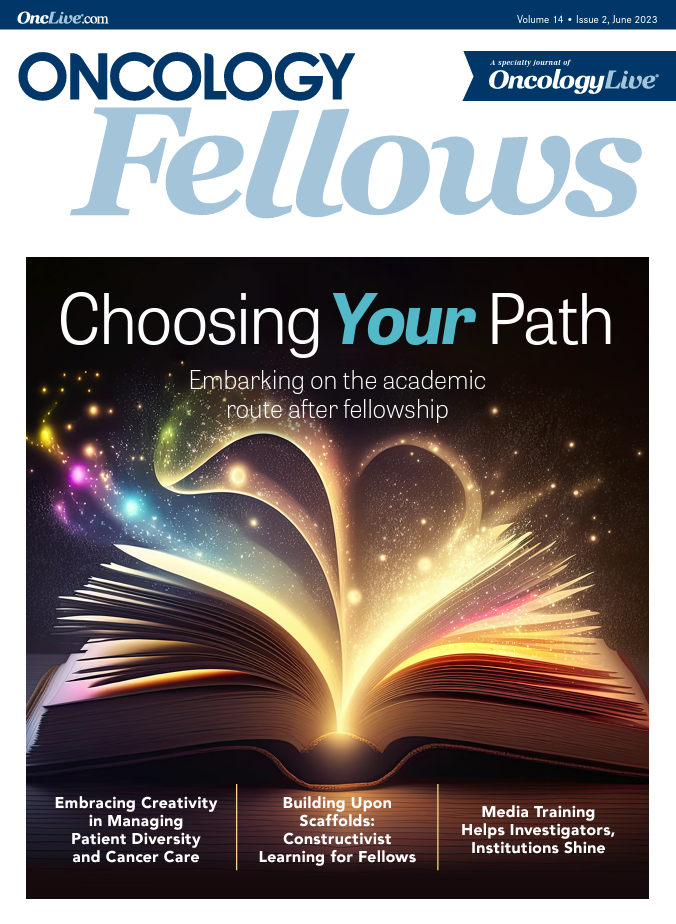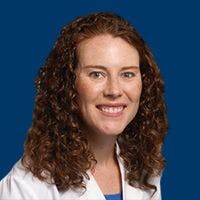Publication
Article
Oncology Fellows
Building Upon Scaffolds
Author(s):
Cancer care is changing rapidly, and understanding and incorporating new practices is challenging both for practicing oncologists and oncology trainees.
Matthew Schwede, MD

Cancer care is changing rapidly, and understanding and incorporating new practices is challenging both for practicing oncologists and oncology trainees. With more than 100 approvals of oncology drugs and devices in 2022 alone,1 oncologists increasingly subspecialize in specific cancer types to stay abreast of the everexpanding treatment landscape.
However, oncology fellows do not specialize immediately and must learn the fundamentals of all cancer types, struggling with not only the expansive volume of cancer-related information but also the rapid rate of change in the field. Unfortunately, medical oncology is often taught through passive approaches such as lectures, which are less beneficial than active or interactive learning approaches.2 Additionally, available resources such as the American Society of Clinical Oncology Self-Education Program (ASCO-SEP) textbook3 and the National Comprehensive Cancer Network (NCCN) Clinical Practice Guidelines4 have daunting density and breadth. As a result, oncology fellowships need active learning approaches that flexibly incorporate new knowledge and treatment paradigms while ensuring that fellows learn core principles.
To fill this need, Sam Brondfield, MD, MAEd, an assistant clinical professor at the University of California, San Francisco (UCSF), created oncology scaffolds to help improve the fellow education experience.5 Passive lectures are common in oncology, while constructivist approaches that may improve learning are rare. Therefore, we piloted updatable online modules (“scaffolds”). These modules were web-based, editable slides that highlighted key topics within each of the 12 categories of solid tumors: non–small cell lung, small cell lung, upper gastrointestinal, lower gastrointestinal, breast, head and neck, salivary/thyroid, germ cell, bladder/ renal/adrenal, prostate cancer, melanoma, and sarcoma. Each scaffold was built with Google Slides and was limited to a maximum of 20 slides, with 5 bullet points per slide and 7 words per bullet point. Individual slides were dedicated to key components of cancer work-up and treatment.
These bullet points captured key information from the ASCO-SEP and NCCN Clinical Practice Guidelines, and slides included tables and figures from these resources. The scaffolds were intended to be brief so that fellows could learn key concepts about each cancer type, providing them with a framework to which additional knowledge could be added. Similar approaches to learning have been used before in other areas of medical education6,7 but not in oncology education. Importantly, the scaffolds were not merely slides intended for a didactic presentation but were meant to be directly edited and updated by fellows in Google Slides.

As oncologists at UCSF and Stanford University, we piloted these scaffolds at both institutions. Results showed that fellows were willing to engage with and update the scaffolds. After sending links for the scaffolds to all UCSF and Stanford oncology fellows, we kept track of how often fellows edited them over 2.5 years. Fellows from both institutions made a total of 60 edits to the slides, which all correctly incorporated new knowledge about medical oncology, including data from landmark trials and novel treatment approaches.
Since this educational approach was meant to improve upon fellows’ learning, we conducted focus groups of UCSF and Stanford oncology fellows to discuss and evaluate the scaffolds. Fellows detailed the benefits, saying these modules served as effective preparation for clinical work, readily provided information for rapid review, and aided in the navigation of NCCN Clinical Practice Guidelines and other resources. Fellows found the scaffolds were easily accessed and could be used at any time, including on the way to work. The scaffolds filled an important gap in educational materials available to oncology fellows during training, they concluded.
However, fellows also encountered challenges with the use of scaffolds. Some fellows felt underqualified to update them, whereas others did not take accountability to update them, explaining that they were not ultimately responsible for the scaffolds’ accuracy.
To help overcome these barriers, it was clarified that fellows should update the scaffolds as part of the learning process. Additionally, although the scaffolds were designed to represent an initial basic framework, some fellows found this frustrating, citing the scaffolds’ lack of depth as a barrier to their application to nuanced clinical care in the real-world setting.
Based on our experience designing and implementing these scaffolds as well as our interactions with fellows during the focus groups, our team has several suggestions for educators wishing to create a similar resource:
- Because of the time required to create scaffolds, we recommend dividing their creation among multiple faculty and/or fellows.
- To ensure that fellows update the scaffolds, we recommend assigning fellows to edit the scaffolds rather than simply encouraging them to do so. Faculty mentorship of fellows would help ensure that fellows’ lack of experience is not a barrier to updating the scaffolds.
- To help fellows claim individual responsibility for the scaffolds and maximize learning, we do not recommend sharing the responsibility for updating the scaffolds among multiple institutions. Instead, we recommend that each institution maintain its own version of scaffolds, with individual fellows internally updating them.
- Fellows’ understanding after using the scaffolds should be assessed, because such assessments are likely to promote learning.8
Given the current breadth, depth, and pace of change in the field of oncology, creating resources to help oncology fellows actively learn both fundamentals and changes in practice is essential. Few resources that address these needs exist, and it will be increasingly important for oncology educators to consider how to convey new knowledge while not overwhelming fellows with details and overlooking fundamentals in the process. Beyond the scaffolds serving as a tool for fellows, we hope that our experience serves as a scaffold on which oncology educators can build dynamic and sustainable learning resources to help fellows engage actively in their education.
References
- Oncology Regulatory Review. FDA. Published online February 3, 2023. Accessed May 8, 2023. https://www.fda.gov/about-fda/2022oce-annual-report/oncology-regulatory-review
- Lim J, Ko H, Yang JW, et al. Active learning through discussion: ICAP framework for education in health professions. BMC Med Educ. 2019;19(1):477. doi:10.1186/s12909-019-1901-7
- 2022 ASCO Self-Evaluation Program (SEP). The American Society of Clinical Oncology Education. Accessed April 18, 2023. https:// education.asco.org/product-details/ASCO-SEP-Digital-Subscription
- Treatment by cancer type. National Comprehensive Cancer Network. Accessed April 18, 2023. https://www.nccn.org/guidelines/ category_1
- Brondfield S, Schwede M, Johnson TP, Arora S. Online scaffolds: a constructivist approach to oncology fellow learning. J Clin Oncol. 2022;40(suppl 16):11010. doi:10.1200/JCO.2022.40.16_suppl.11010
- Larnard J, Zucker J, Gordon R. The stairway to antibiotic heaven: a scaffolded video series on empiric antibiotic selection for fourth-year medical students. MedEdPORTAL. 2020;16:11036. doi:10.15766/mep_2374-8265.11036
- McConnaughey S, Freeman R, Kim S, Sheehan F. Integrating scaffolding and deliberate practice into focused cardiac ultrasound training: a simulator curriculum. MedEdPORTAL. 2018;14:10671. doi:10.15766/mep_2374-8265.10671
- Epstein RM. Assessment in medical education. N Engl J Med. 2007;356(4):387-396. doi:10.1056/NEJMra054784





















%20(2)%201-Recovered-Recovered-Recovered-Recovered-Recovered-Recovered-Recovered-Recovered-Recovered-Recovered-Recovered-Recovered-Recovered-Recovered-Recovered-Recovered-Recovered.jpg?fit=crop&auto=format)
%20(2)%201-Recovered-Recovered-Recovered-Recovered-Recovered-Recovered-Recovered-Recovered-Recovered-Recovered-Recovered-Recovered-Recovered-Recovered-Recovered-Recovered-Recovered.jpg?fit=crop&auto=format)
